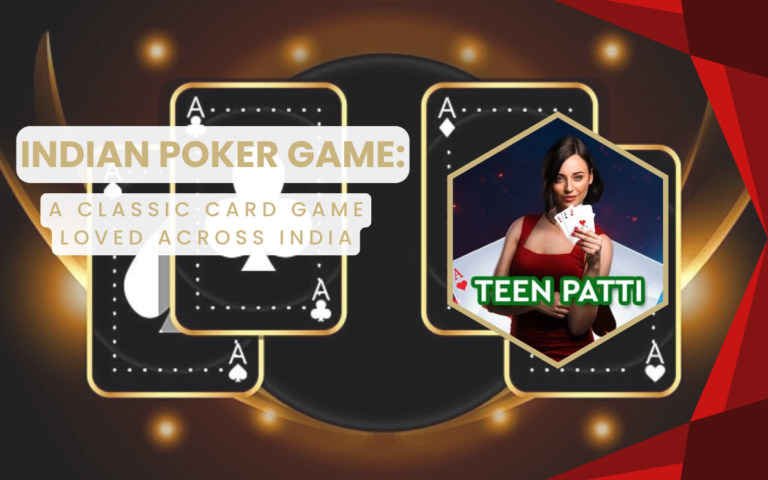Decoding Rivals: Reading Opponents in Teen Patti
Teen Patti, often dubbed as Indian Poker, is a game that intertwines skill, luck, and strategy, especially when it comes to understanding Opponents in Teen Patti. The game is traditionally played in South Asia and has captivated players for generations, becoming a staple at family gatherings, festivals, and increasingly, online gaming platforms. A key aspect that separates the casual player from the skilled one is the ability to read opponents. Understanding and decoding your rivals’ intentions and strategies in Teen Patti is critical to securing victory. This article delves into the art of reading opponents in Teen Patti, providing insights into tells, betting patterns, psychological strategies, and practical tips to enhance your gameplay, much like mastering the nuances of a Rummy game.

Understanding the Basics of Teen Patti
Before we dive into the nuances of reading opponents in Teen Patti, it’s essential to grasp the basics of the game. Teen Patti is typically played with a standard 52-card deck, with each player dealt three cards face-down. The objective is to have the best three-card hand or to convince your opponents, including the Teen Patti stars, to fold their hands. The ranking of hands in Teen Patti, from highest to lowest, is as follows:
- Trail (Three of a Kind): Three cards of the same rank.
- Pure Sequence (Straight Flush): Three consecutive cards of the same suit.
- Sequence (Straight): Three consecutive cards, not of the same suit.
- Color (Flush): Three cards of the same suit, not in sequence.
- Pair (Two of a Kind): Two cards of the same rank.
- High Card: The highest single card in the hand.
Players can choose to play blind (without looking at their cards) or seen (after viewing their cards). Betting rounds follow, where players must either match the current bet, raise, or fold. The game continues until all but one player has folded or a showdown is called.
The Art of Reading Opponents in Teen Patti
In Teen Patti, as in other card games, success often hinges on your ability to read your opponents in Teen Patti. This involves deciphering their behavior, analyzing their betting patterns, and understanding their psychological tendencies. Here are several strategies to decode your rivals effectively.
1. Observing Betting Patterns
One of the most reliable ways to read opponents is by observing their betting patterns. Over time, players tend to develop habits that can be exploited if noticed. Here’s what to look for:
- Consistent Raises: If a player consistently raises during the game, they might be bluffing to intimidate others. However, some opponents in Teen Patti raise only when they have a strong hand. Understanding the player’s usual behavior is key to decoding whether their raise is a bluff or a sign of strength.
- Frequent Calls: Players who frequently call might be trying to see the next card or are unsure about their hand’s strength. This could indicate a mediocre hand that they are hesitant to fold but not confident enough to raise.
- Sudden Aggression: A usually passive player who suddenly becomes aggressive could be trying to capitalize on a strong hand or attempting a well-timed bluff. Pay close attention to the context of the game and the previous actions of opponents in Teen Patti.

2. Identifying Physical Tells (In-Person Games)
While Teen Patti is increasingly played online, in-person games still offer a wealth of information through physical tells, especially when reading opponents in Teen Patti. A tell is an involuntary or deliberate physical reaction that can give away a player’s hand strength. Here are some common tells:
- Shaking Hands: A player with shaking hands might be nervous, often a sign of a strong hand or a big bluff.
- Eye Contact: Players who avoid eye contact might be bluffing or unsure about their hand. On the other hand, staring someone down could be an attempt to intimidate or mislead.
- Quick Glance at Chips: A player who quickly glances at their chips after seeing their cards might be calculating a bet, often indicating a strong hand.
3. Analyzing Online Behavior
In online Teen Patti, where physical tells are absent, you must rely on betting patterns, timing, and chat behavior. Some things to consider include:
- Bet Timing: Players who take a long time to act might be trying to mask a weak hand by pretending to think over their decision. Conversely, instant bets could indicate premeditated actions based on strong hands.
- Chat and Emojis: Many online platforms offer chat and emoji features. Players who use these excessively might be trying to distract others or convey false confidence. Analyze the context in which these are used to gauge the intentions of opponents in Teen Patti.
4. Understanding Psychological Tendencies
Psychological tendencies play a significant role in Teen Patti. Understanding your opponent’s mindset can give you a significant advantage. Here are a few psychological aspects to consider:
- Tilt: If a player is on tilt (emotionally unsettled, often after a significant loss), they are likely to make irrational decisions. Exploiting their frustration can lead to easy gains.
- Confidence Levels: Confident players might overestimate their hands, leading to aggressive bets. Conversely, overly cautious players might fold too easily when pressured, even with a decent hand.
- Bluffing Frequency: Some players bluff frequently, while others rarely do. Identifying a player’s bluffing tendency can help you make better decisions during critical moments.
Tips for Improving Your Ability to Read Opponents
Reading opponents in Teen Patti is an acquired skill that improves with practice and experience. Here are some tips to sharpen this skill:
- Practice Observant Play: Dedicate games specifically to observing rather than playing aggressively. Take note of how different players react to various situations.
- Keep a Poker Face: Just as you try to read others, they will be trying to read you. Maintain a neutral expression and consistent behavior to avoid giving away information.
- Vary Your Play: Avoid becoming predictable. Mix up your betting patterns and strategies to keep opponents guessing.
- Reflect on Games: After each game, reflect on what you observed and how you could have better read your opponents. This reflection helps in recognizing patterns and improving future play.
- Study and Learn: There are numerous resources available—books, articles, and videos—that can help you understand advanced strategies in reading opponents. The more you learn, the more equipped you’ll be.
Conclusion
Decoding opponents in Teen Patti is an art that combines observation, psychology, and strategy. By honing your ability to read opponents in Teen Patti, you can turn the tide of the game in your favor, whether you’re playing casually with friends or in high-stakes settings. Remember, every player has a unique style, and the key to mastering Teen Patti lies in your ability to adapt and counter these styles effectively. With practice and patience, you can develop the skills necessary to outwit your opponents and consistently come out on top.








